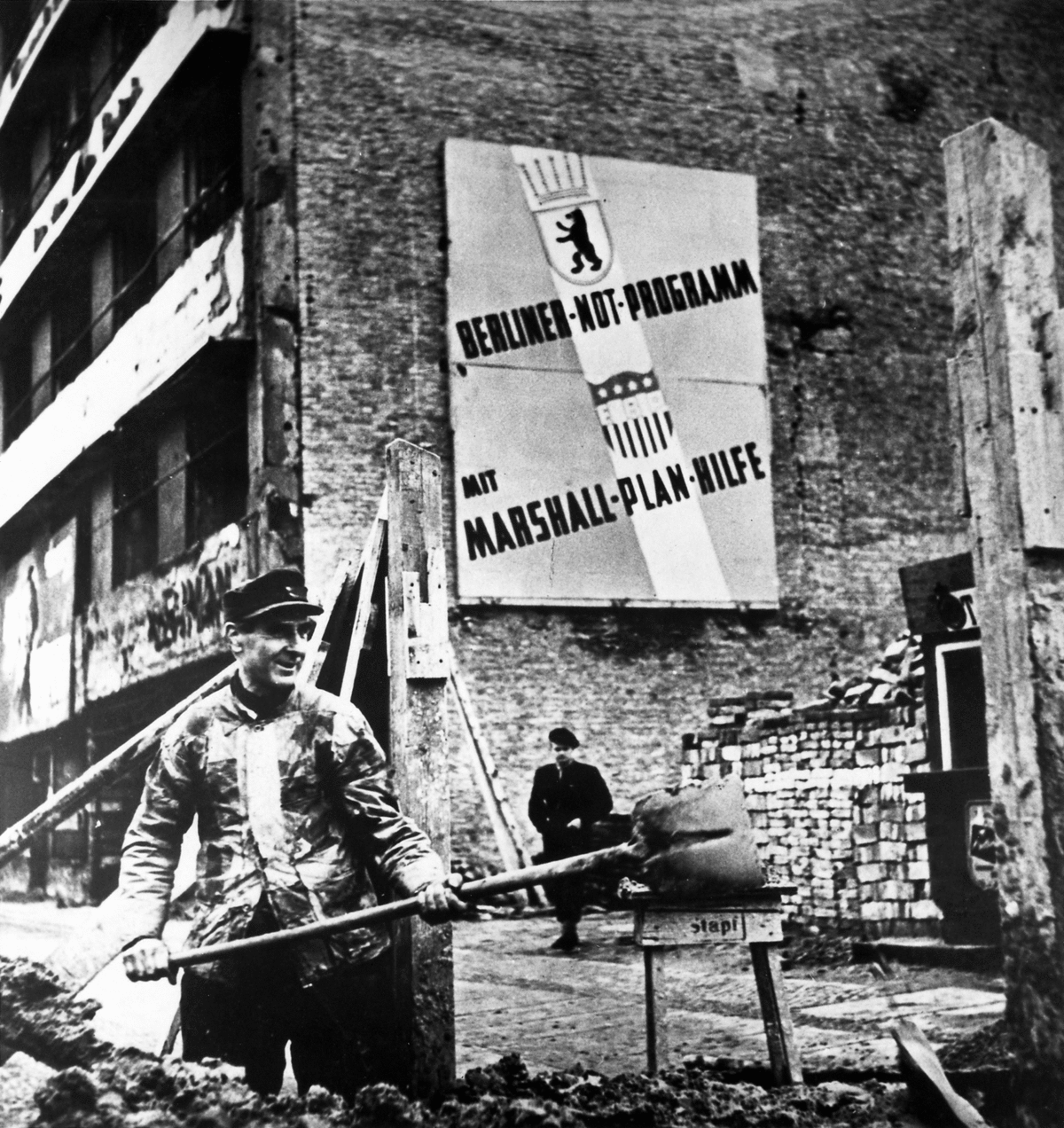
Marshall Plan
GermanyIn early 1947, France, Britain and the United States unsuccessfully attempted to reach an agreement with the Soviet Union for a plan envisioning an economically self-sufficient Germany, including a detailed accounting of the industrial plants, goods and infrastructure already removed by the Soviets. In June 1947, in accordance with the Truman Doctrine, the United States enacted the Marshall Plan, a pledge of economic assistance for all European countries willing to participate, including the Soviet Union. Under the plan, which President Harry S. Truman signed on 3 April 1948, the US government gave to Western European countries over $13 billion (equivalent to $189.39 billion in 2016) to rebuild the economy of Europe. Later, the program led to the creation of the Organisation for European Economic Co-operation.
The plan's aim was to rebuild the democratic and economic systems of Europe and to counter perceived threats to Europe's balance of power, such as communist parties seizing control through revolutions or elections. The plan also stated that European prosperity was contingent upon German economic recovery. One month later, Truman signed the National Security Act of 1947, creating a unified Department of Defense, the Central Intelligence Agency (CIA), and the National Security Council (NSC). These would become the main bureaucracies for US defense policy in the Cold War.
Stalin believed that economic integration with the West would allow Eastern Bloc countries to escape Soviet control, and that the US was trying to buy a pro-US re-alignment of Europe. Stalin therefore prevented Eastern Bloc nations from receiving Marshall Plan aid. The Soviet Union's alternative to the Marshall Plan, which was purported to involve Soviet subsidies and trade with central and eastern Europe, became known as the Molotov Plan (later institutionalized in January 1949 as the Council for Mutual Economic Assistance). Stalin was also fearful of a reconstituted Germany; his vision of a post-war Germany did not include the ability to rearm or pose any kind of threat to the Soviet Union.
